The initial tolerance to sub-lethal Cd exposure is the same among ten naïve pond populations of Daphnia magna, but their micro-evolutionary potential to develop resistance is very different
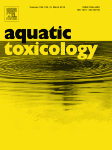 Differences between the ecological reality in the field and the controlled test conditions in the lab make ecotoxicological results sometimes difficult to extrapolate from the lab to the situation in the field. One of the conditions that are different in the field compared to the lab is the presence of different individuals of an organism. First, each of these individuals differ in their tolerance to toxic stress. Second, the presence of different individuals allow for evolution which results in a group of individuals having a higher tolerance to toxic stress compared to an unevolved group. To characterize these two problems and to investigate possible solutions to them, we compared in our latest paper the tolerance and the potential to evolve in ten groups of individuals orginating from ten natural 'field' populations in Belgium. Although the tolerance of the individuals in these ten groups is quite similar, their potential to evolve an enhanced tolerance is very different.
Differences between the ecological reality in the field and the controlled test conditions in the lab make ecotoxicological results sometimes difficult to extrapolate from the lab to the situation in the field. One of the conditions that are different in the field compared to the lab is the presence of different individuals of an organism. First, each of these individuals differ in their tolerance to toxic stress. Second, the presence of different individuals allow for evolution which results in a group of individuals having a higher tolerance to toxic stress compared to an unevolved group. To characterize these two problems and to investigate possible solutions to them, we compared in our latest paper the tolerance and the potential to evolve in ten groups of individuals orginating from ten natural 'field' populations in Belgium. Although the tolerance of the individuals in these ten groups is quite similar, their potential to evolve an enhanced tolerance is very different.

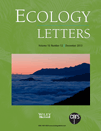
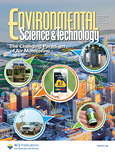 Polychlorinated biphenyls (POPs) are resistant towards common degradation pathways and accumulate, because of their lipophilicity, in organisms' fatty tissues. In addition, the transfer of POPs in a foodweb typically results in elevated POP concentrations at the highest trophic levels (i.e. biomagnification). Previous modeling efforts hence focused on the importance of an organism's trophic level and the lipophilicity of the chemical as predictors for the organism's POP body concentration. However, field studies have not only demonstrated that Arctic seabirds, as top predators, have elevated POP body concentrations compared to their environment, but also that POP body concentrations can differ substantially between species that occupy similar trophic levels.
Polychlorinated biphenyls (POPs) are resistant towards common degradation pathways and accumulate, because of their lipophilicity, in organisms' fatty tissues. In addition, the transfer of POPs in a foodweb typically results in elevated POP concentrations at the highest trophic levels (i.e. biomagnification). Previous modeling efforts hence focused on the importance of an organism's trophic level and the lipophilicity of the chemical as predictors for the organism's POP body concentration. However, field studies have not only demonstrated that Arctic seabirds, as top predators, have elevated POP body concentrations compared to their environment, but also that POP body concentrations can differ substantially between species that occupy similar trophic levels. 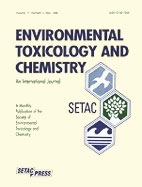 Quantitative structure–activity relationship models (QSAR models) typically relate a set of predictor variables to the response variable. These models are useful tools in predictive ecotoxicology as the can be used to predict the (adverse) biological activity of a chemical (the response variable) based on the physico-chemical properties of the chemical (the predictor variables). As animal testing, and especially vertebrate testing, are generally strongly discouraged, the use of QSAR models offers an alternative. However, in ecotoxicology, QSAR models that describe the relationship between the physico-chemical properties of chemicals and their chronic toxicity to vertebrates are scarce. This lagoon in our knowledge is filled by the research described in our latest paper.
Quantitative structure–activity relationship models (QSAR models) typically relate a set of predictor variables to the response variable. These models are useful tools in predictive ecotoxicology as the can be used to predict the (adverse) biological activity of a chemical (the response variable) based on the physico-chemical properties of the chemical (the predictor variables). As animal testing, and especially vertebrate testing, are generally strongly discouraged, the use of QSAR models offers an alternative. However, in ecotoxicology, QSAR models that describe the relationship between the physico-chemical properties of chemicals and their chronic toxicity to vertebrates are scarce. This lagoon in our knowledge is filled by the research described in our latest paper.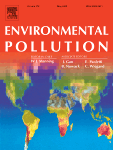 We have all heard the phrase: "We know more about the surface of the moon than the deep sea". Unfortunately, this is not exaggeration: the deep sea is the largest ecosystem on Earth, but also one of the least studied despite it harbouring a high biodiversity and a wealth of resources. Sadly, the deep seafloor is still, for most people, out of sight and therefore out of mind. This has encouraged the dumping of waste of all sorts into deep waters. For centuries, this was organic, degradable matter. Now, our solid wastes often contain synthetic elements, plastics in particular. In recent years, more and more reports have been published that demonstrate the large presence of plastic litter in the deep sea: the seafloor of the Mediterranean, Atlantic canyons and even Arctic waters are covered with plastic litter. Recently, our lab added another pollutant to the list: for the first time ever, microplastics were recorded in deep-sea sediments originating from several location worldwide. These results show that microplastics have penetrated the marine environment to a larger extent than previously assumed.
We have all heard the phrase: "We know more about the surface of the moon than the deep sea". Unfortunately, this is not exaggeration: the deep sea is the largest ecosystem on Earth, but also one of the least studied despite it harbouring a high biodiversity and a wealth of resources. Sadly, the deep seafloor is still, for most people, out of sight and therefore out of mind. This has encouraged the dumping of waste of all sorts into deep waters. For centuries, this was organic, degradable matter. Now, our solid wastes often contain synthetic elements, plastics in particular. In recent years, more and more reports have been published that demonstrate the large presence of plastic litter in the deep sea: the seafloor of the Mediterranean, Atlantic canyons and even Arctic waters are covered with plastic litter. Recently, our lab added another pollutant to the list: for the first time ever, microplastics were recorded in deep-sea sediments originating from several location worldwide. These results show that microplastics have penetrated the marine environment to a larger extent than previously assumed.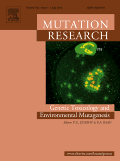 Children of obese fathers are more likely to have chronic diseases in their later life. That was the conclusion of a remarkable study by Dr. Adelheid Soubry in BMC Medicine (
Children of obese fathers are more likely to have chronic diseases in their later life. That was the conclusion of a remarkable study by Dr. Adelheid Soubry in BMC Medicine ( LMAE's PhD-student Dieter De Coninck, who will soon finish his PhD, was selected with 29 other PhD students out of over 150 applicants to attend the
LMAE's PhD-student Dieter De Coninck, who will soon finish his PhD, was selected with 29 other PhD students out of over 150 applicants to attend the